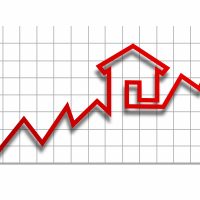
According to the housing report, a slowdown in buyer activity – as suggested by the Royal Institution of Chartered Surveyors (RICS) and the Bank of England – will see house price growth slow to zero by the end of this year. Then in 2022, prices will decline between four and five per cent.
Homeowners and high earners driving market activity
Forbearance which suppressed a rise in unemployment and propped up household incomes has allowed people to continue paying their mortgages and rent, evading the possibility of repossessions and arrears.
However, younger people or those on low incomes who have been financially impacted are less likely to be homeowners or looking to purchase. This indicates buyer activity has been driven by those who were already better off and managed to save more cash during the lockdown which contributed to purchases and fuelled higher property prices.
This was evidenced by the fact that despite the economic backdrop of 2020, house prices rose seven per cent year-on-year in Q4. This was a contrast to Oxford Economic’s expectation last summer that the year would end with price drops of 3.5 per cent.
The report suggested the launchpad from 2020’s market performance coupled with continued government support this year would result in further increases.
Government initiatives raising prices
The report said while the stamp duty holiday was primarily extended to give buyers time to complete, it expected this to lead to additional transactions and raise house prices higher.
Oxford Economic also suggested that as the government now had a stake in the market through its 95 per cent mortgage guarantee scheme, this fuelled speculation that policymakers would not allow prices to drop.
When the support ends
Unemployment is forecast to rise to six per cent later this year when schemes such as furlough and payment deferrals end. While this is modest considering the pandemic’s impact on the UK’s economic performance, the firm said this was still two per cent higher than pre-Covid levels.
Young and low earners have been disproportionately affected by the economic fallout of Covid-19, with the proportion of workers aged 18-24 shrinking by eight per cent as of February. Employment dropped by one per cent for those in the late 30s and 40s while those aged 50 and over saw a rise in employment.
And while a rebound in GDP is forecast, Oxford Economics predicts a drop in household income in real terms due to inflation and high unemployment will put a strain on people’s finances.
Again, this suggests those on lower incomes who are not property owners will be most affected by the pandemic.
While this may not have an impact on purchases and business pipeline, a drop or loss of income could impact the rental market if people fall behind payments and into arrears. Combined with the end of the evictions ban in May, this could force some landlords to sell up adding to the supply of available properties and suppressing price growth.
Furthermore, no new support for the economy is expected from the Bank of England and the report said there was “little prospect” of the implementation of negative interest rates to maintain cheap mortgage borrowing.
Additionally, recent increases in swap rates and the possibility of higher write-offs on past loans could cause lenders to ration credit, leading to a modest rise in mortgage interest rates.
It said: “With the outlook gloomier for low income, mainly non-homeowning households than for better-off groups, the risks are probably skewed towards a smaller correction in property prices than a larger one.”















